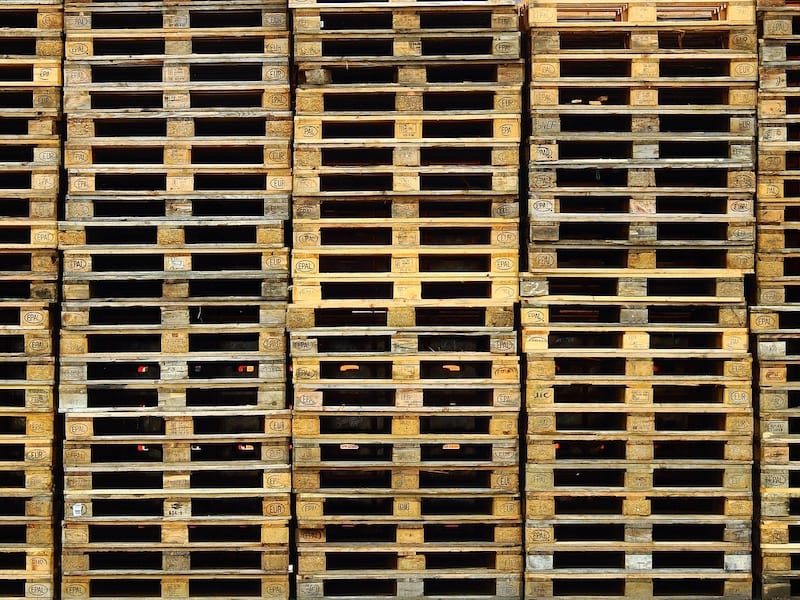You may have seen pallets that have markings or colors on them. But what do they mean? In the article, “How to Tell if a Wood Pallet is Safe for Reuse,” 1001Pallets.com goes over the meanings behind the stamps, markings and colors you may find on pallets.
Pallets with No Stamps or Markings
If the pallet does not have any stamps or markings on it, it is a “national pallet”. These pallets are used for domestic transport within the country, and most are not chemically treated.
IPPC Stamps
Pallets with an IPPC (International Plant Protection Convention) stamp are used for international shipping. These stamps typically include:
- The IPPC symbol, which is located on the left side of the stamp
- The 2-letter country code followed by a company registration number, which is located on the right side of the stamp
- The treatment code, which is also located on the right side of the stamp
Treatment Codes:
There are four common treatment codes that tell what method of treatment the pallet has received:
- HT: Heat Treatment
- MB: Methyl Bromide
- DB: Debarked
- KD: Kiln Dried
Other Stamps
PRL: Verified by the Package Research Laboratory.
EPAL: Approved by the European Pallet Association.
1001Pallets.com says other acronyms stamped on pallets may “indicate the name of the pallet inspection firm, a manufacturing company, or an uncommon type of wood.”
Colored pallets
1001Pallets.com lists the four main pallet pool companies in the world that you can differentiate by the color:
- Red pallets: PECO (The Pallet Exchange Company from the USA)
- Red pallets: LPR (La Palette Rouge from Europe)
- Blue pallets: CHEP (Commonwealth Handling Equipment Pool from Australia)
- Brown pallets: IPP (IPP Logipal from Europe)
Stamps, markings and colors can reveal important information about a pallet, including the overall quality. At General Pallets, you can count on quality products; we use virgin wood only, our heat-treated pallets are certified by the Package Research Laboratory and we meet ISPM-15 certification.


